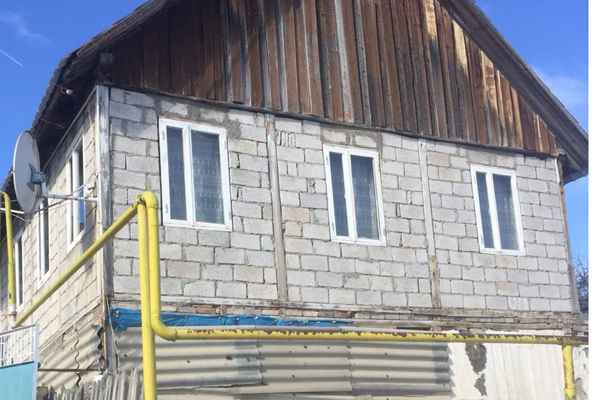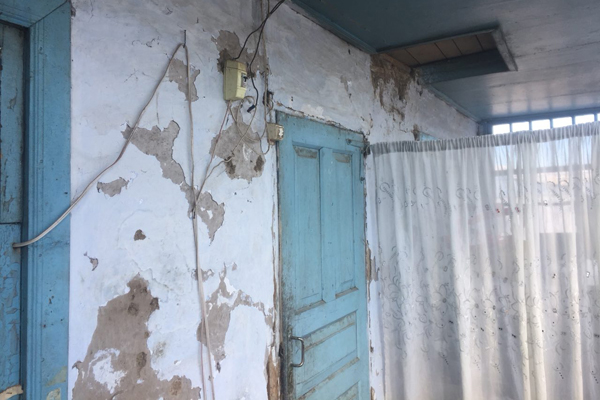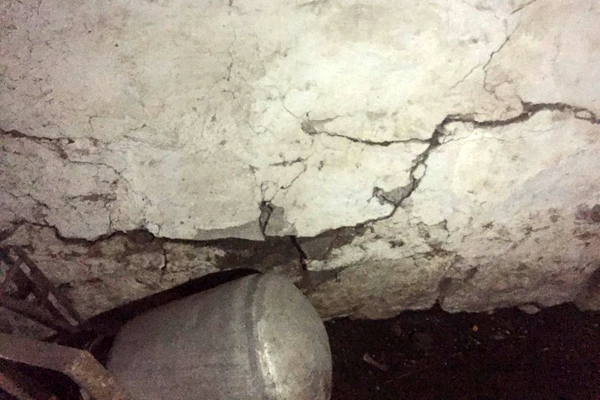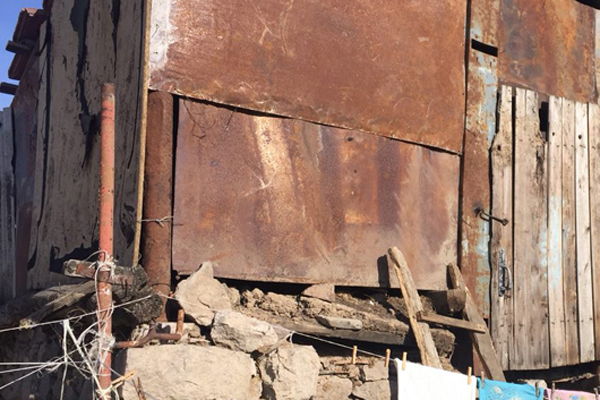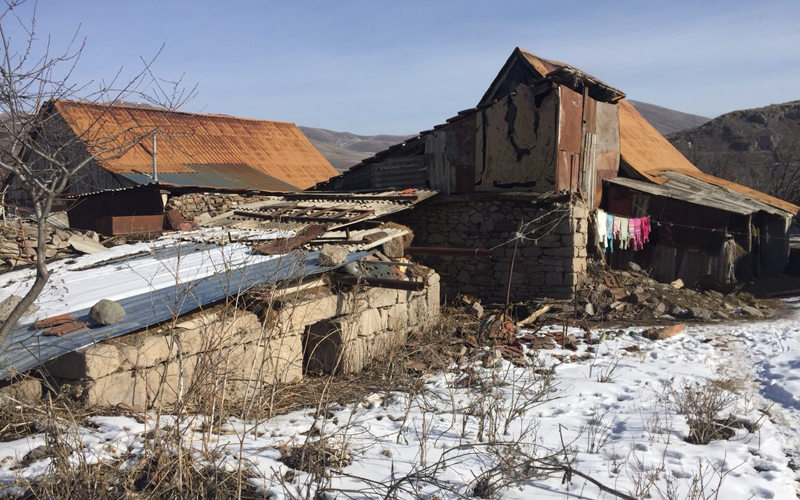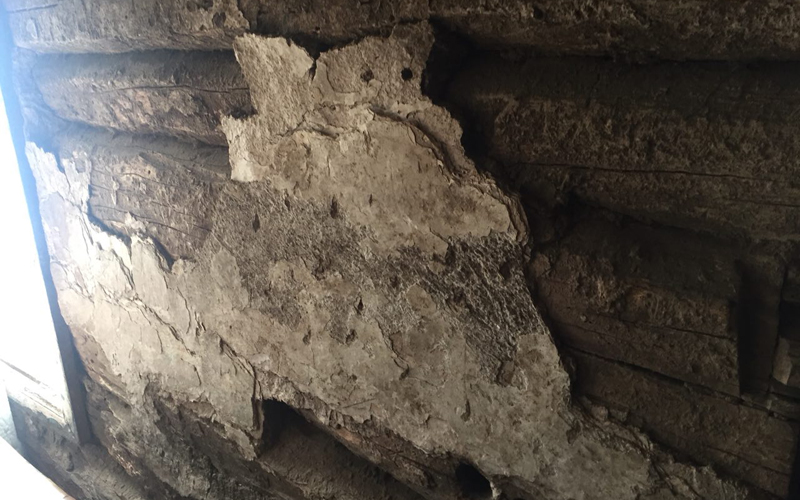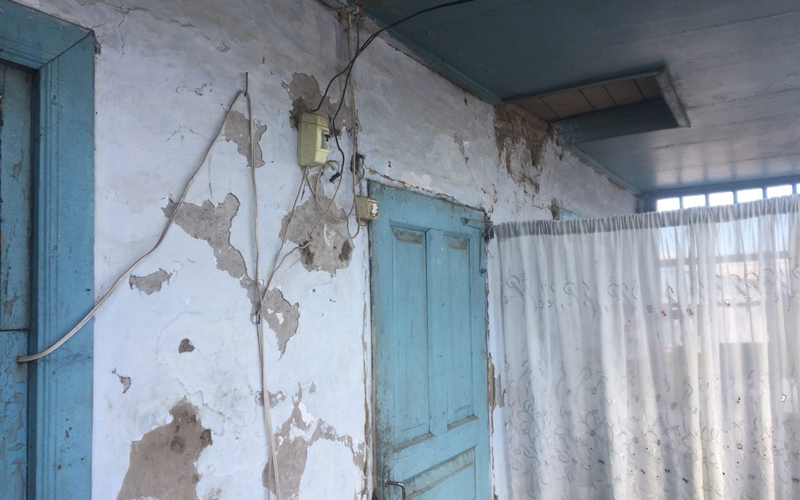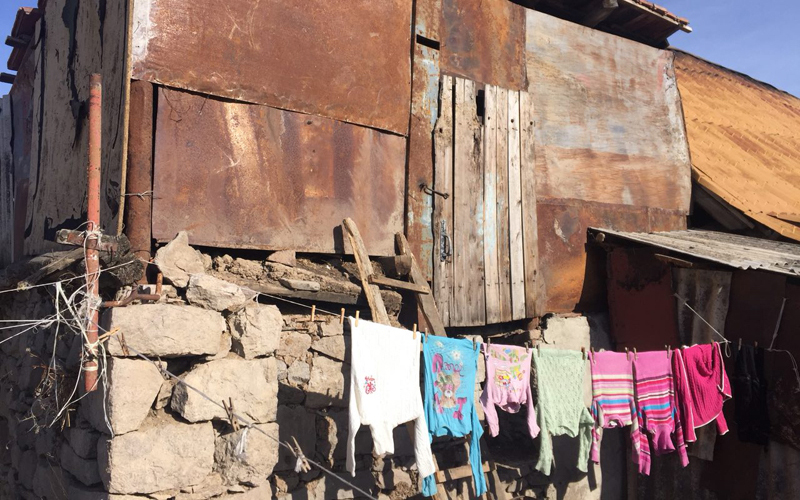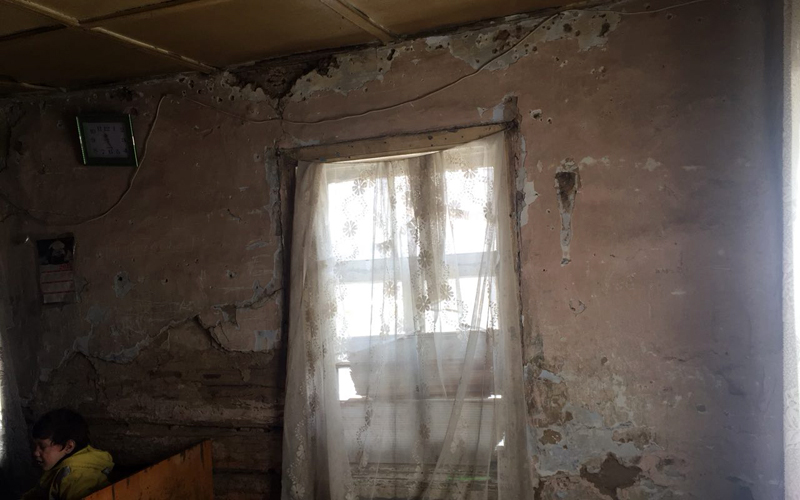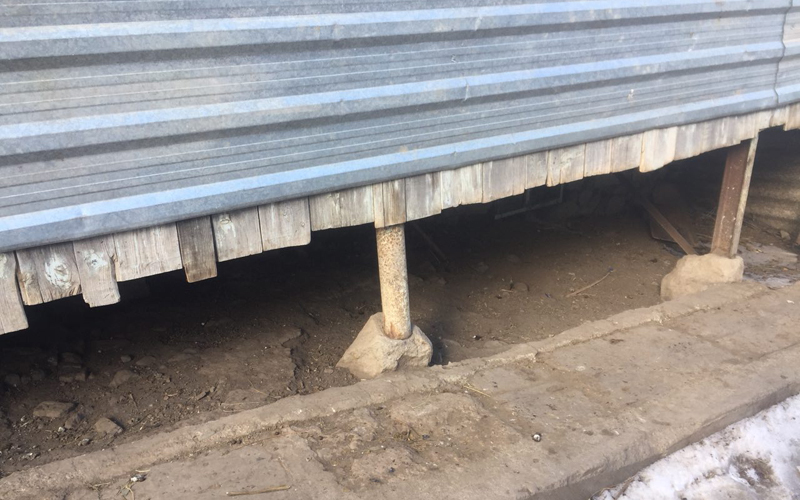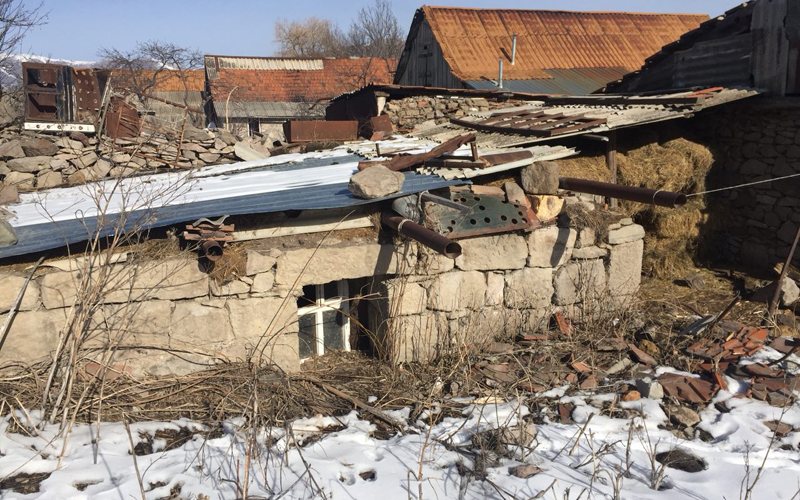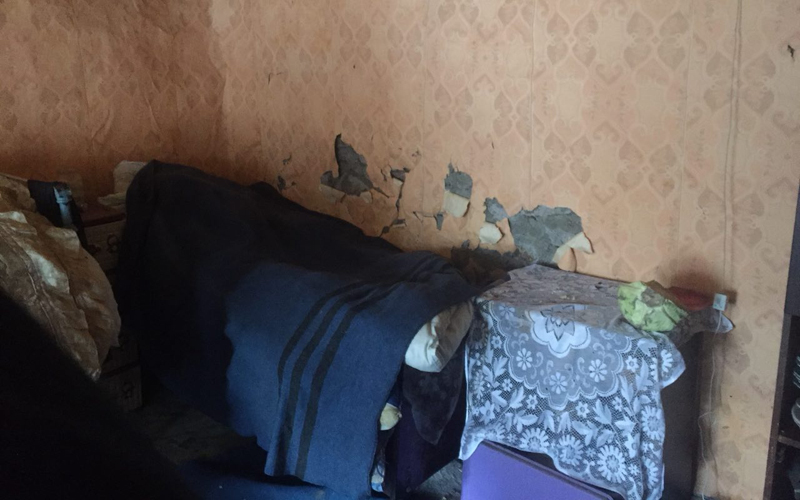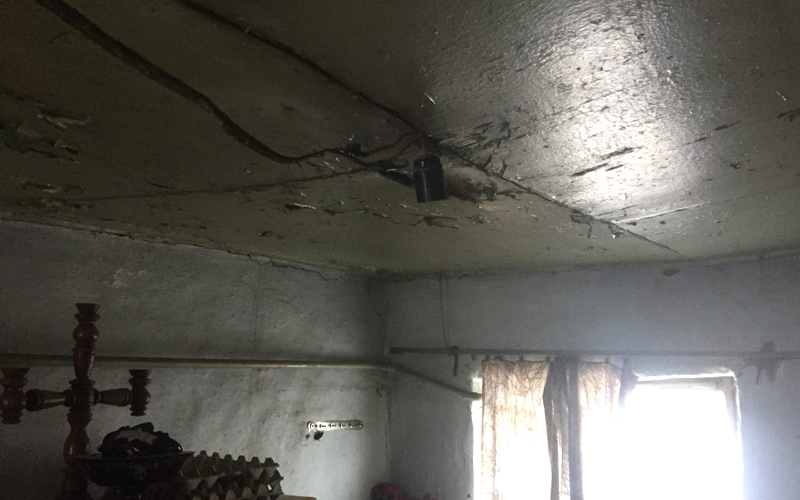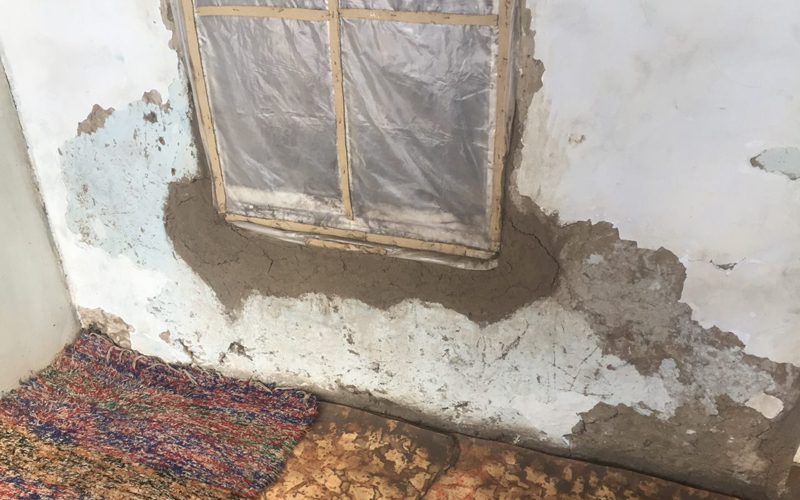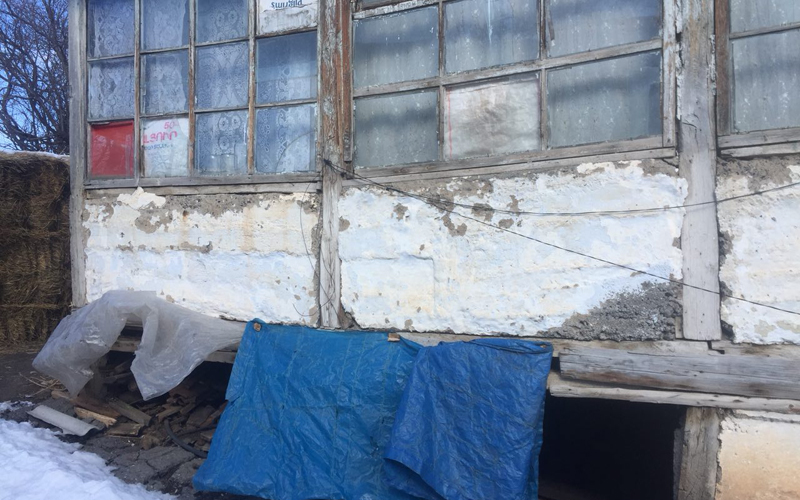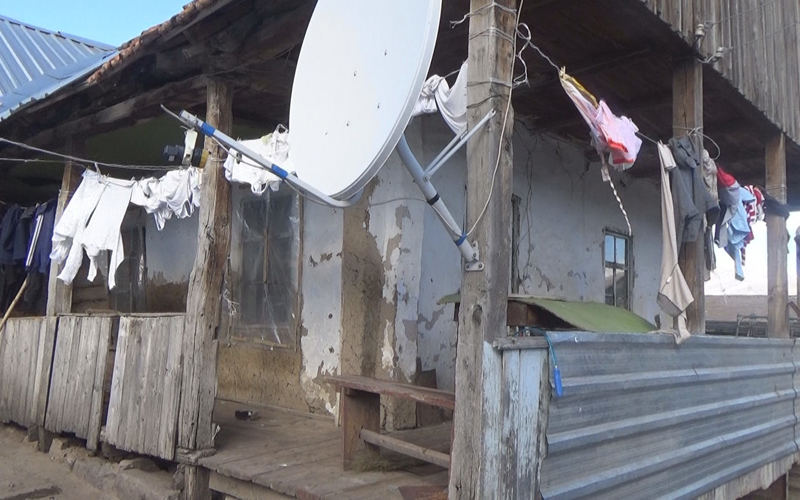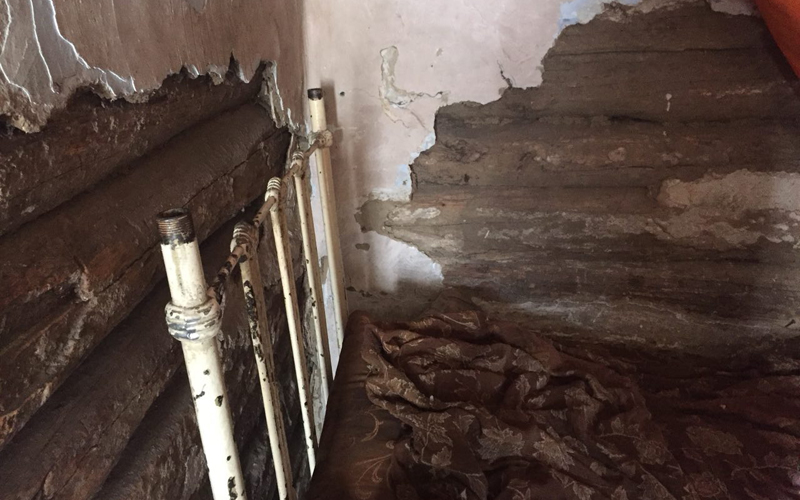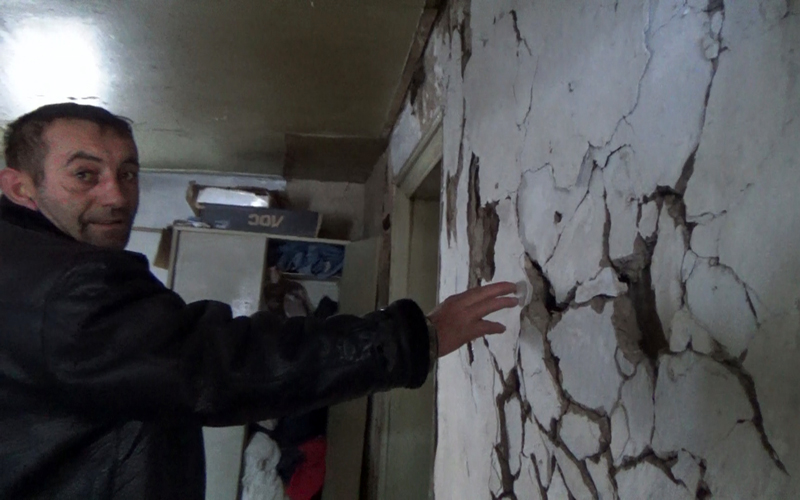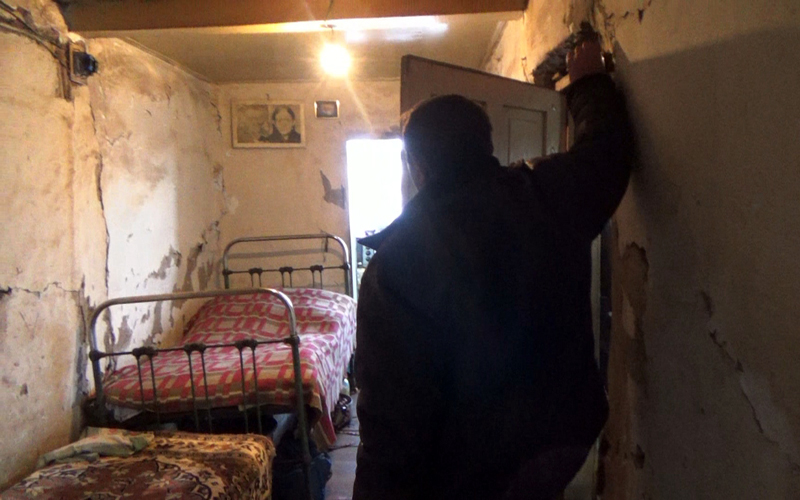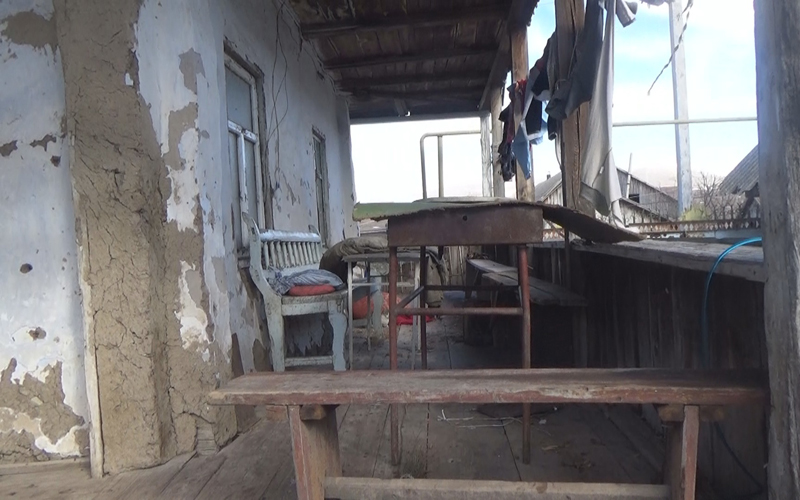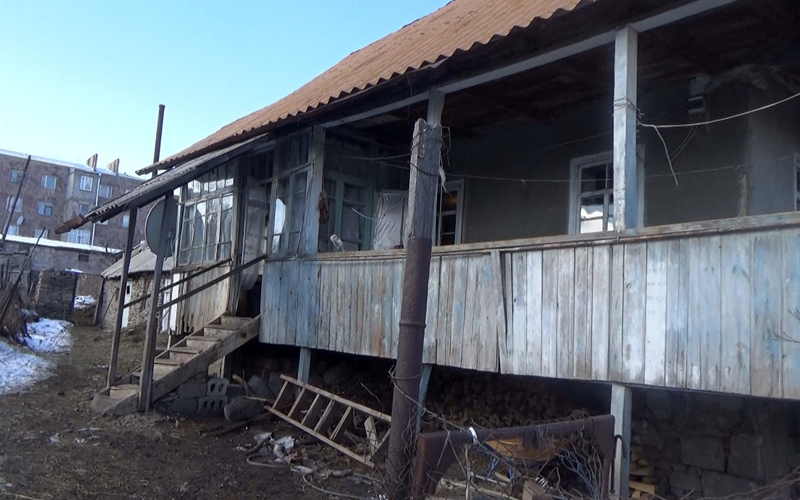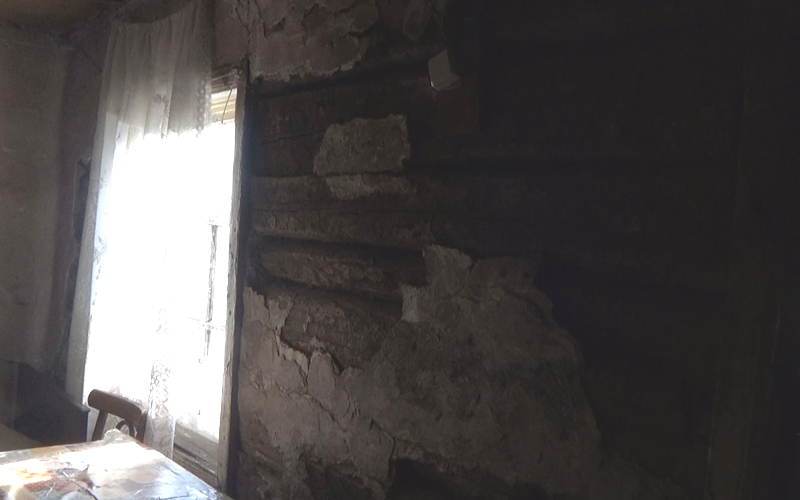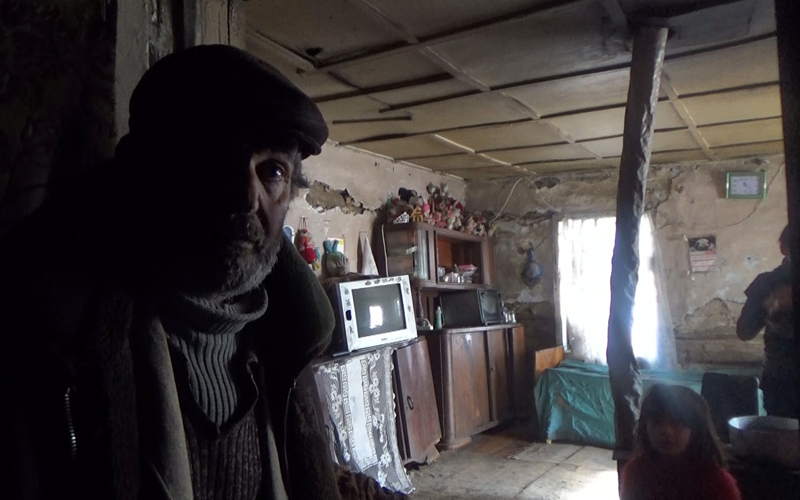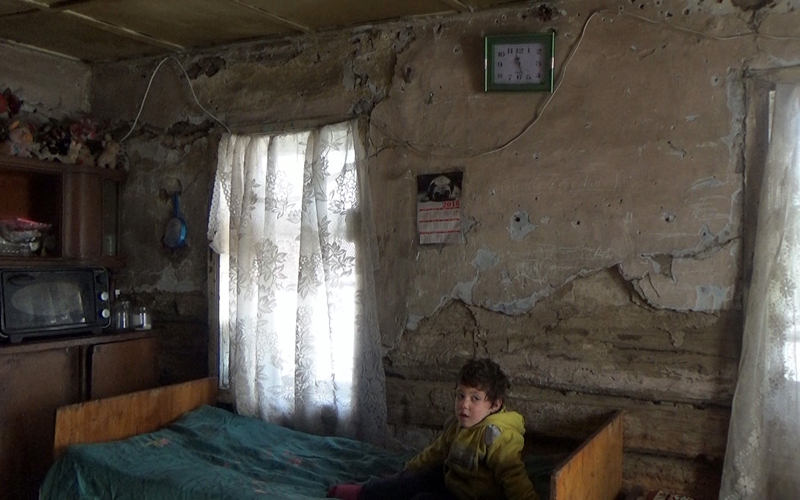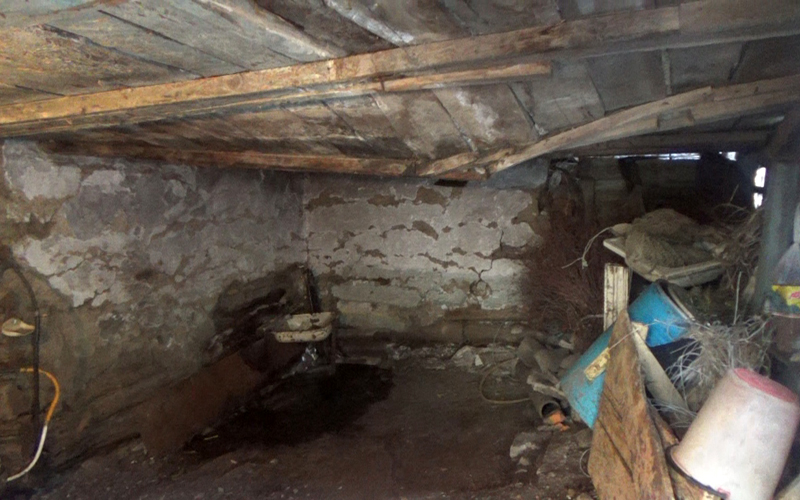We haven’t forgotten our homeland, but the homeland has forgotten about us, Grigor Aramyan, who came to Chambarak 26 years ago from now Azerbaijan-controlled Artsvashen, says. The man calls his current dwelling a “dugout.”
“Well, it’s a house on paper, but it really isn’t, you know?” Aramyan says, asking us to go around and film the shack through and through. This was the last house we went to during our two-day visit to Chambarak. The situation in the town and the locals’ living conditions seemed to get more and more dire with each house we visited.
The town starts with the red or orange-roofed houses built by Molokans. The colorful roofs leave a pleasant and – dare we say – joyful impression against the snow-covered and wearisome mountains. But these very same houses have now become the bane of their residents’ existence.
We walk around the city center and see a flow of people headed towards the office of World Vision Armenia. We ask what the matter is, and they say a group of TV reporters and Government representatives have come to the small town from capital Yerevan.
They are talking about us – we are the reporters. But we are not from TV, and we have no Government representatives with us. Several dozen people immediately surround us and begin talking about their seemingly never-ending problems. In December, they were Yerevan and held a demonstration outside the president’s office, demanding the payment of money they were promised back in 2009. By a Government program, the families who moved to Chambarak were to be allocated AMD 6 billion (more than $ 12,448,130) as “material aid to those forcibly resettled from Artsvashen.” People have only received 700 million drams to date – around 360 000 per person, instead of the one million they were supposed to get. What’s more, the money was given only to those who came to the town from Artsvashen. The fact that most of the families would have extended with time was not taken into account. Some of the people who received the 360 thousand drams are no longer alive, which means that their families will not be given the rest of the money. The locals, meanwhile, say the remainder amount would help them to partially cover the costs of repairing their dilapidated houses.
In Soviet times, Artsvashen was an Armenian exclave. In 1992, however, when Azerbaijani troops took over the village, Armenian villagers resettled to Chambarak and bought the relocating Molokans’ wooden houses with the financial compensation they were awarded by the state. Over the years, the locals say, they never managed to collect enough money to repair the collapsing houses. There was even a plan to build cottages for the former Artsvashen villagers in a separate neighborhood, but it was never implemented.
“We received 360 thousand drams per person, and used the entire sum to repair our houses. But the money was not enough; our cellars are now collapsing. We are automatically border guards; we provide the state with soldiers… For example, 22 draftees were sent to Jabrayil. If Jebrail is ours, then Chambarak is also Armenia… Why don’t they want to hear us?” Mrs Elin, a participant of the impromptu protest action, says.
The people once went to the Minister of Territorial Administration and Development Davit Lokyan with a request to help them to finally resolve their issue, “but he shut us up so that the issue is not raised in the Government,” a middle-aged man says.
“He just lied to us. Plain and simple,” a group of villagers correct him.
Day One of the Visits
At the end of the impromptu demonstration, some of the villagers ask us to go to their houses to see their conditions for ourselves. At some point, they even begin arguing whose house is in a more worse state. We explain that we want to show the general picture and not write about individual problems, so it doesn’t really matter whose house we go to first. After long negotiations, we are taken to a neighborhood at the entrance to the city. The facade of the very first house is patched up with stones; Mayis Aramyan could not afford to repair the rest of the house with the money received from the Government.
We enter the house. The somewhat mended part of the house can be considered livable with reservations. The walls of the rooms in the back of the house are cracked; the wooden floors are fractured. The whole family are gathered in the living-room; that is, the only room in the house they can afford to heat. The cracks in the walls are covered with blankets and rags.
Contract serviceman Ohan Ohanyan’s house is in a similar condition. The area is large, but only two of the rooms are suitable for living.
One after another, we visit a number of dilapidated houses for two hours. People mainly talk about housing and social problems: there are no jobs, the land is not fertile, contract servicemen do not receive high enough salaries.
Our next stop is Mamikon Tizyan’s house in the town center. The 61-year-old man says he used to own a large library in Artsvashen and was a reciter; in Chambarak, he worked as a mailman. Now he is unemployed; the family barely make ends meet; his house is collapsing.
Tizyan shows us the basement of his house. The gas pipeline, he says, is only 5 meters away, but he does not have the money for gas. Once in the basement, we see that the house stands on rotten boards, and the walls are covered in numerous cracks. We are honestly surprised by the fact that this house has not collapsed yet.
Tizyan speaks about his disabled son, who gets no benefits from the state. Tizyan himself is a second-group invalid. To top it all, two months ago, his wife broke her leg and has been bedridden ever since.
“What do you currently live on?” we ask. “Barely anything,” he replies.
Day Two of Visits
We meet the former Artsvashen villagers in the town center again on the second day. A small group of them is standing by the road, talking. The Chambarak locals say the town has only two seasons – winter and really cold winter. The uncharacteristically warm weather this year (-5 °C at the time) allows the people to stay on the street longer, which they are happy for since “our houses are colder anyway.” There is a clear segregation between the natives of Chambarak and the people who resettled here from Artsvashen: the latter mostly communicate with each other.
Mamikon Tizyan accompanies us to more dilapidated houses. One of them is barely standing; there is a wood stove in one of the rooms, and this is where all three generations of the family are gathered. The walls are again covered with rags, some of which do not even do a good job of hiding the huge gaps. The woman complains that they live on only on her husband’s allowance – 16 000 drams per month. A portrait of a 12-year-old boy hangs on the wall: their son died 8 years ago from a lightning strike. A part of the walls in the back of the house is missing; it has been patched up with iron plates.
Grigor Aramyan approaches us when we are about to head back to Yerevan. He asks us to visit his house, too. He says he used to work as a police officer in Soviet time,and left a lot of property back in Artsvashen.
“Now my house is flooded with water. You can see for yourself: the barn, my cow and my calf are knee-deep in water. I bought this dugout and have yet to find the means to fully construct it,” says. Aramyan is one of the people who will get less money if the Government finally decides to allocate the rest of the money to the people: his father received a small part of the sum before passing away.
He shows us in and we are met with more cracked walls and fractured floors. Mamik Tizyan, who is still accompanying us, quotes Paruyr Sevak: “Try, Master, not to go mad…” Tizyan tries to talk expressively and vividly in front of the camera, but no words can convey the dire state of Chambarak vividly enough.
 Epress.am News from Armenia
Epress.am News from Armenia


